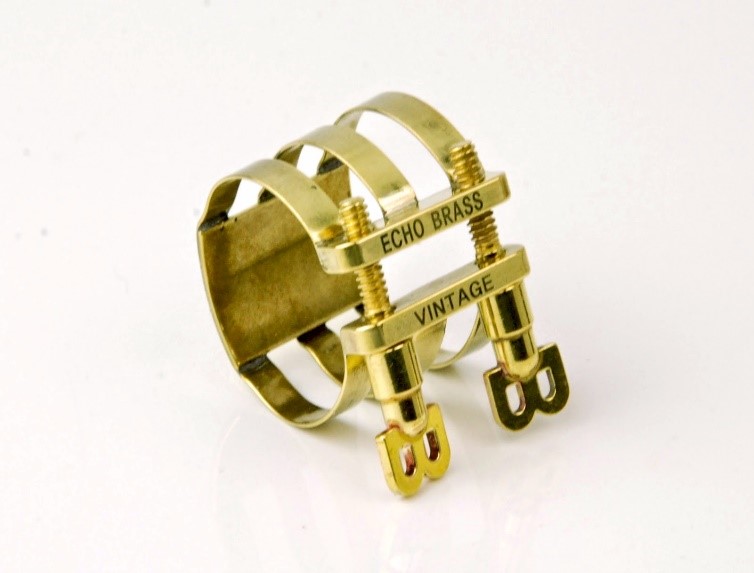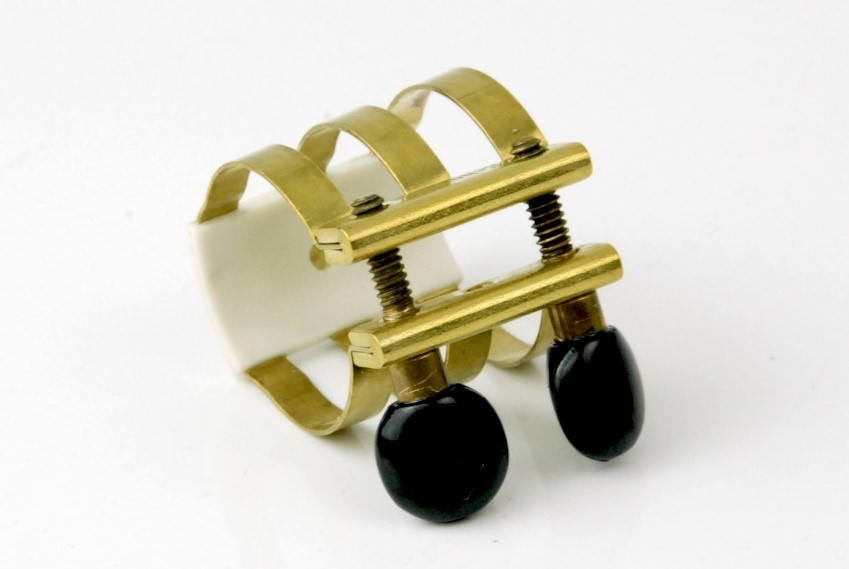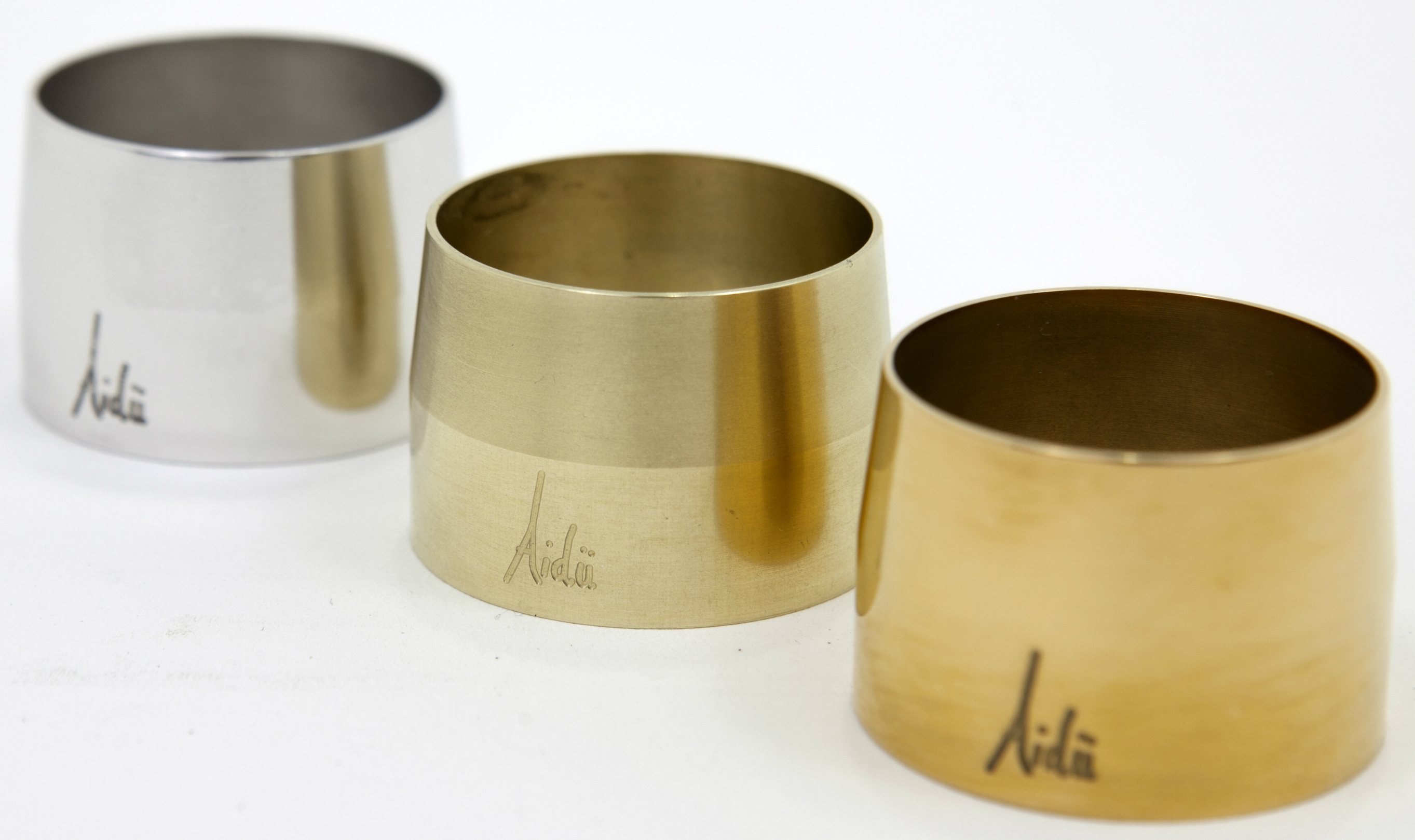NEW PRODUCT REVIEW: The Echobrass & Aidü Ligature
Introduction
With the demand increasing for vintage mouthpieces, ligatures, saxophones, neck’s, and other accessories, many manufacturers have decided to make a copy or produce their own version of these highly sought after pieces of equipment. Most recently, I had the chance to try two ligatures: One, is offered by Echobrass and is a re-creation of the highly sought after Brilhart 3 screw ligature. This ligature was used (and still is) by such heavyweights as alto saxophonist Kenny Garrett and tenor saxophonist Javon Jackson. The second ligature, is produced by Dos Allen, owner of Blue Ridge Horns, and is a metal ring ligature called the Aidü. I will be reviewing each ligature based on their build quality, ease of use, response, and my overall thoughts. Both ligatures I am reviewing were for tenor saxophone but the Echobrass ligature is available for soprano, alto, and tenor saxophone and the Aidü ligature is available for soprano, alto, tenor, and baritone saxophone.
Echobrass Ligature


Product Description
When I spoke with Brian at GetASax (http://www.getasax.com/), here is what he had to say about the EchoBrass ligature:
“There’s a reason why the vintage Brilhart 3-Band ligatures have been singled out by the market as one of most desirable vintage ligatures. They are simply great ligatures. The issue has been there will never be enough vintage Brilhart ligatures to meet the high demand for this style of ligature. Thankfully, the Echobrass Company has stepped in to meet this demand. This ligature is a true reproduction: from the alloy of brass to the type of plastic on the reed plate, it is exactly the same as the vintage Brilhart 3-Band ligature. Same dimensions, same weight, same feel, same playing response. For those of you who have always wanted this time-tested style of ligature, but have found them prohibitively expensive ($400+), now perhaps getting one is within reach. This is admittedly still an expensive ligature by modern standards ($165) but honestly, to achieve this level of quality of workmanship in Korea where these are made, it does take time and materials to make them. A question many players ask me is, how does it play? It just plays well. It is a high quality ligature with heavy duty brass and nice big screws that are easy to tighten firmly and evenly. This ligature frees the reed to vibrate with a rich and balanced tone. Compared to a standard ligature, the Echobrass seems richer, more full, and warmer.“
Build Quality
I received the Echobrass ligature for tenor saxophone with the black screw joints and white plastic plate. I found the Echobrass ligature to be well constructed in terms of the solid brass, screws, and plastic plate. Do to these quality materials, this ligature would be hard to bend or damage and will last you a very long time.
Ease of Use
Although you would assume most ligatures are easy to use and adjust, some ligatures I have used in the past tend to slide while you are adjusting your mouthpiece on the neck and some depending on the placement of the ligature do not properly contact the reed. The Echobrass ligature fit my vintage hard rubber link well and was easy to tighten and loosen depending where I wanted the ligature to sit on my mouthpiece. I would though recommend contacting Brian with your current mouthpiece setup to confirm whether the S or SL size would fit your mouthpiece best.
Response
I found the Echobrass ligature did not restrict the reed whatsoever and allowed it to freely vibrate. Compared to other ligatures I have tried in the past, I found the Echobrass maintained a free blowing quality across the entire range of the saxophone that was very balanced and not resistance in the extreme low’s or high’s. Sonically, it’s difficult for me to say if Echobrass ligature has brighter or darker characteristics to the sound but for me compared to the Silverstein and Ishimori Sterling Silver ligature I have been playing, I found the Echobrass ligature made my sound a tad darker which I noticed more in the high’s (D,Eb,E,F, F#) and low’s (C#,C, B, Bb).
Overall Thoughts
I highly recommend the Echobrass ligature if you have been searching for a vintage Brilhart 3-band ligature and are not looking to spend $400+ dollars on a ligature. In addition, if you are not happy with your current ligature setup and have the budget, this ligature does respond well and will hold up for many years.
Echobrass Ligature YouTube Demonstration
http://www.youtube.com/watch?v=fquDQPLz3n0
Echobrass Purchasing & Product Information
http://www.getasax.com/product-category/echobrass-ligatures/
Aidü Ligature

Product Description
The Aidü Ligature is a solid brass ring ligature that is manufactured out of a solid brass bar that comes in 3 finishes (raw-brass, rhodium, and gold-plated). Dos Allen, owner of Blue Ridge Horns and inventor of the Aidü ligature, said he came up with the name “Aidü” jokingly because this ligature reminds him of a wedding band and sounds like “I do”.
Build Quality
I found the Aidü ligature was made out of solid brass material that has some weight to it and was not easy to bend. The Aidü ligature was smooth and was evenly circular inside without any scratches, dent’s, or any other imperfections.
Ease of Use
The Aidü ligature fit well on my slant link and was actually easy to adjust which is typically not the case with ring ligatures.What I will say, is the sizing is very important and the Aidü ligature will fit a bit differently on each mouthpiece do to its dimensions. My recommendation if you are interested is to consult with Dos and provide him your mouthpiece measurements so he can make sure to provide you a Aidü ligature that will fit your setup.
Response
When it comes to various ligature finishes, it can be difficult at times to determine if the finish has an effect on the overall sound and response. The three Aidü ligatures that Dos provided me had the following finishes:
- Aidü ligature “Raw-Brass”- I found the raw-brass finish was the most free-blowing compared to the rhodium and gold plated finishes. The sound was balanced across the entire saxophone and sonically I thought the sound was neutral with more spread than focus.
- Aidü ligature “Rhodium”- I found the response to have a bit more back-pressure with this plating which some players might prefer. The sound was similar to the bare-brass version except a tad darker.
- Aidü ligature “Gold-Plated”- I found this plating had a similar response to the raw-brass but with more focus and brilliance that was noticeable in the upper stack.
Overall Thoughts
I really liked Dos Allen’s Aidü ligatures. With any ring ligature, the fit is very important and making adjustments can be a tad more work while pushing in or pulling out your mouthpiece on the neck compared to a standard two-screw or leather ligature like a Rovner. I personally liked the gold-plated version the most due to it’s sonic characteristics as well as responsiveness. I would like to thank Dos Allen for sending me his ligatures to test play and would recommend contacting him if you are interested in checking out the Aidü ligature.
Aidü Website
Final Thoughts
The Echobrass and Aidü ligatures are two great options for those players either looking for an alternative to the highly sought after and expensive Brilhart 3-Band ligatures or have wanted to try out a ring ligature for some time and see how it compares to their current setup. At the end of the day, you should choose the equipment that works best for you and what you are trying to achieve. I am happy to add these two ligatures to my list as ligatures to recommend checking out. Please comment below with your experience(s) with either of these ligatures as well as any questions.






January 18, 2019 @ 12:54 pm
I’m looking for an Brilhart Ligature screw with the black plastic on it, does anyone sell them or know someone that does ?